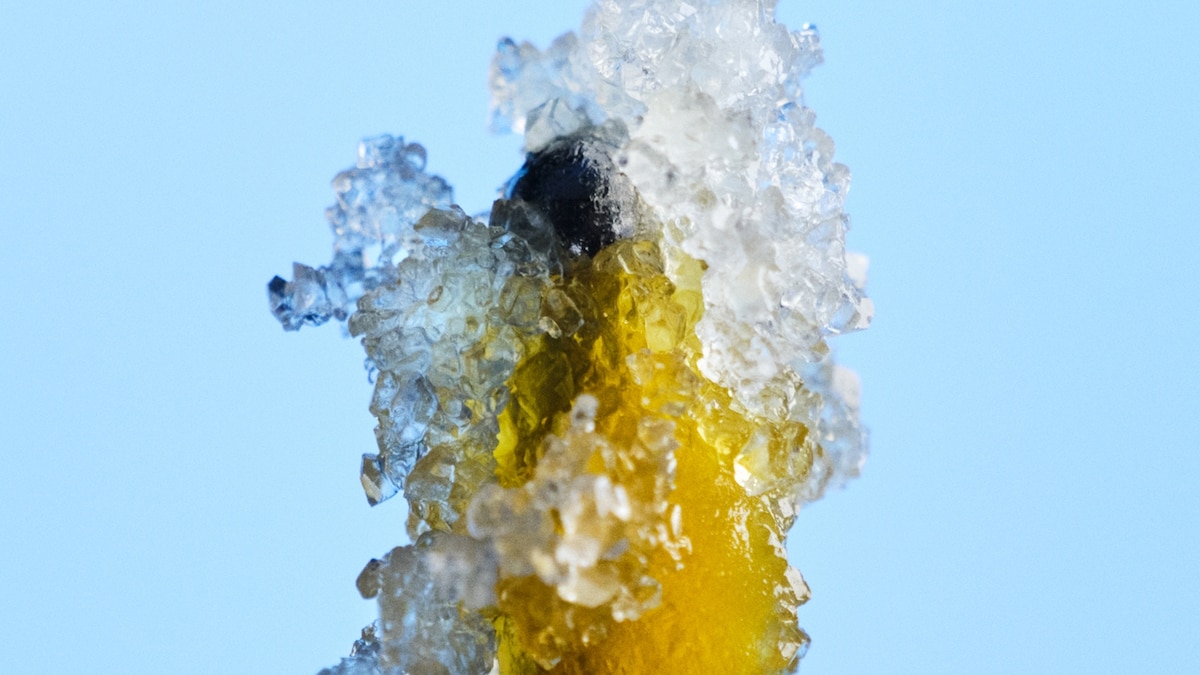Later stages for some products include one in which the crude extract is purified, with fats, waxes, lipids, and other solids filtered out. Other products cook for 24 to 36 hours in a vacuum oven to purge away residual solvent, the pressure inside the oven lowered so that the solvent evaporates without any of the good stuff boiling off.
Using solvents isn’t the only way to make an extract. Raw Garden sends a small amount of its harvest to a partner facility, where it’s turned into a hashish-like product called rosin via a simpler process, using only ice water, heat, and pressure. But hydrocarbon extraction is scalable and highly efficient: Raw Garden’s facility processes around 1,200 pounds of cannabis a day, and has plans to expand.
This isn’t to say there’s no art to it. A concentrate’s consistency—that is, whether the live resin turns into something creamy or crispy or oily—results from the strain one starts with, as well as small, inspired interventions during extraction. What if we whipped the extract before purging it? What if we cured it so that crystals form? Extract bound for vape cartridges sometimes involves an additional step, in which terpenes are evaporated and collected in a distillation column, then selectively reinserted to achieve specific scent and flavor profiles. In Raw Garden’s vape lab, a colorful aroma wheel shows a hundred-plus fragrances one might allegedly encounter in cannabis, like apricot, sage, pine tar, and espresso. “We’re taking aromatic compounds from plants,” says vice president of agricultural operations Casey Birthisel. “There’s a lot here that’s parallel to the perfume industry.”
Some medical professionals see more alarming parallels, however, to drugs ostensibly harder than cannabis. The sky-high potency of concentrates has raised red flags, as multiple epidemiological studies have found correlations between their frequent use and increased risks of psychosis and cannabis use disorder, a form of dependence. Those risks seem particularly acute for teenagers. Colorado and Washington, the first states to legalize recreational pot, are among the states where bills to limit THC potency have been introduced, then rejected or withdrawn amid industry pushback.
Meanwhile, according to analyst Adams, sales of marijuana flower made up about 70 percent of the recreational market when the first legal retailers opened in Colorado in 2014. Today, according to point-of-sale data from Adams and market research firm BDSA, that number has dropped to 40 percent. In the same span, sales of vaping and dabbing products have climbed from around 15 percent of the legal market to 32 percent, though the pace of that growth now seems to be slowing.
